Updike was a well known printer of the post-Morris 20th century printing revival, but he was also as known for his rejection of Morris’s philosophy. Daniel Berkeley Updike had a critical, but realistic, view of Morris’s success as a printer. He founded the Merrymount Press in 1893.
Updike initially followed Morris’s style, but later adopted 17th, 18th, and early 19th century models. He had several fonts cut for him and did a great deal of work for the Episcopal Church. Like Dard Hunter, Updike was a student of printing history and published his book, Printing Types; Their History, Forms and Use, in 1922.
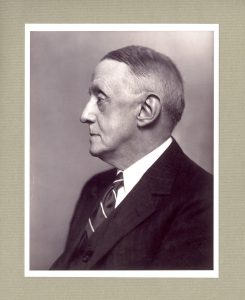
A portrait of Updike 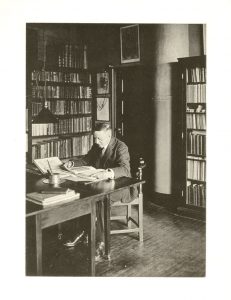
Updike in his study 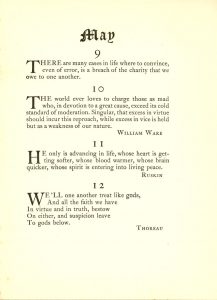
An example included in Updike’s ‘The Well-made Book’ 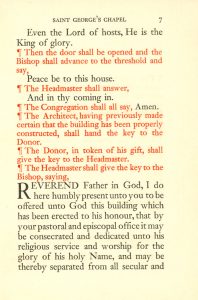
A print example which is included in Updike’s ‘The Well-Made Book’, this page comes from ‘St. George’s Chapel’ 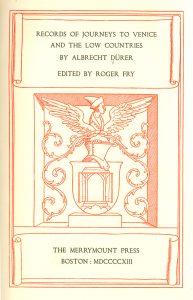
The title page of Updike’s ‘Records of Journeys to Venice and the Low Countries’ 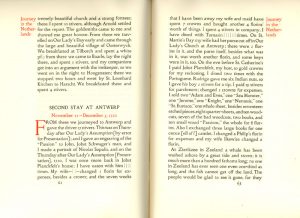
A spread from ‘Records of Journeys’, which shows Updike used similar conventions to Morris in his use of red and black.
